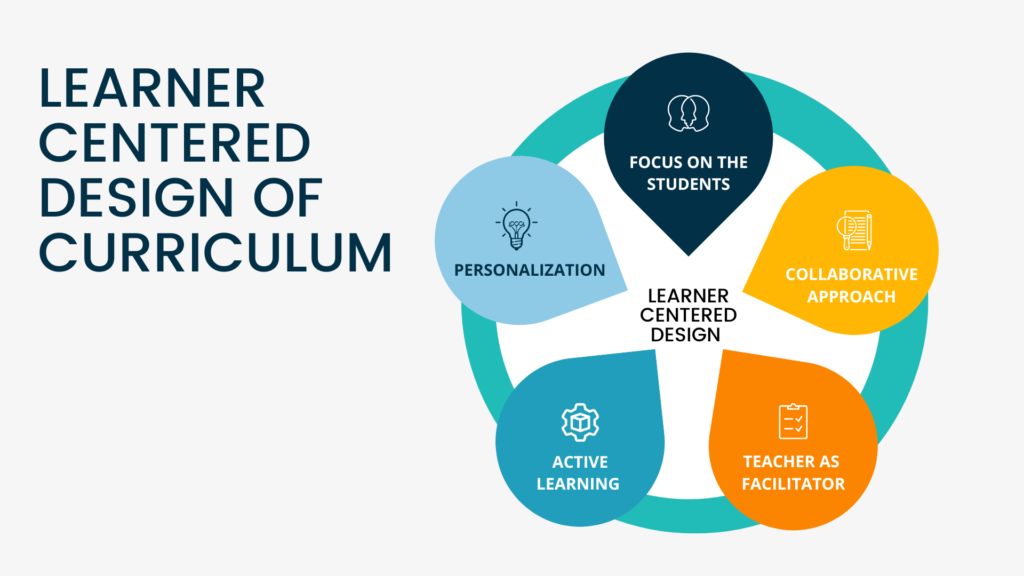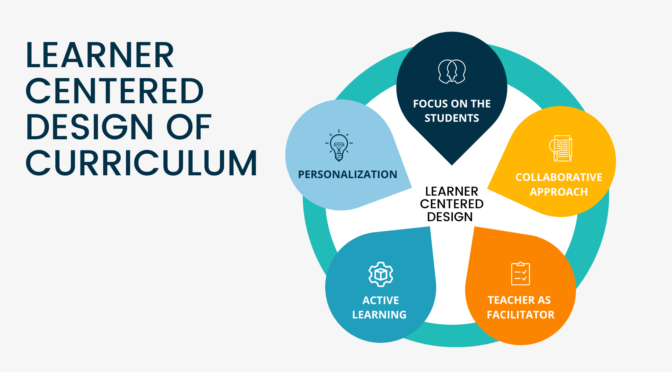Learner-centered design of curriculum is an educational approach that focuses on the student . This approach is based on the student-led learning, with the teacher serving as a facilitator rather than a traditional lecturer. The focus is on creating an engaging, personalized and meaningful experience for each student. The curriculum is designed to look into each student’s unique strengths, interests, and needs, and provide opportunities for students to take ownership of their learning. This approach is very helpful and effective as it leads to deeper and more effective learning, as well as increased motivation and engagement for students.
The following are some key features of a learner-centered design of curriculum:
- Student focused: The focus is on student and they take the ownership of the learning process which help them in greater engagement and motivation.
- Personalization: The curriculum is designed to meet the unique needs, strengths, and interests of each student.
- Active learning: The curriculum focuses on experiential learning, encouraging students to be actively engaged in the learning process.
- Collaborative learning: Opportunities are provided for students to work together, promoting teamwork, communication skills, and peer-to-peer learning.
- Assessment for learning: Assessment is integrated into the curriculum, with a focus on formative assessment which provides feedback to support student learning and help them to improve.
- Technology integration: The use of technology is encouraged to support and enhance learning experiences, making the curriculum more accessible and flexible.
- Teacher as facilitator: The teacher’s role is to facilitate and guide student learning, rather than just providing information.
- Relevance and real-world connections: The curriculum is designed to be relevant and connected to real-world experiences and situations, increasing its relevance and meaningfulness for students.


